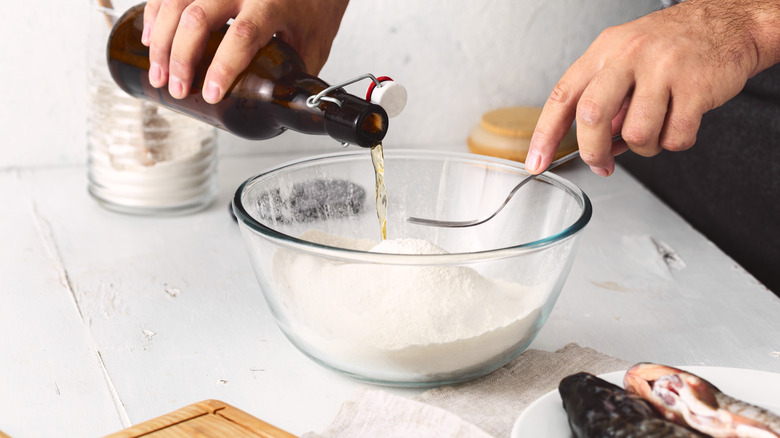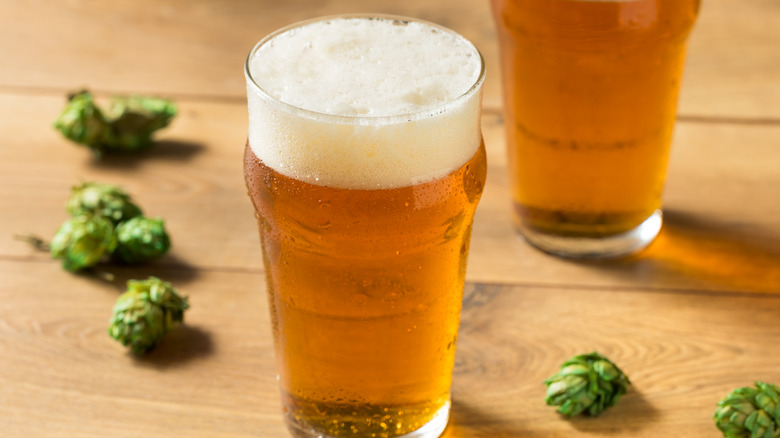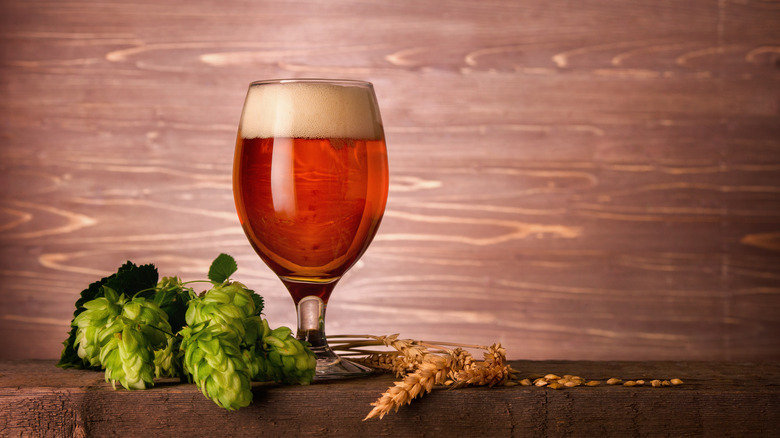The One Type Of Beer You Might Want To Avoid Cooking With
It's beer o'clock in the kitchen. Suds are considered a great addition to batters, marinades, stews, and even some cakes. The bubbles in carbonation lighten the batter, making it perfect for relatively delicate fried fish and onion rings. In stews, brews add deep, earthy flavors with less cooking time. Beer also helps cakes and bread rise in addition to adding depth of flavor, especially in chocolate.
But it's not just flavor and texture that make beer a versatile kitchen star. In marinades, a bottle of ale can transform meat into healthier versions of itself compared with meat for which brew is not used as a marinade. Pilsner and black beer specifically was shown in one study to reduce polycyclic aromatic hydrocarbons (PAHs), which have been linked to colorectal cancer, in pork marinated and then cooked over a charcoal grill. Another study found that beer could reduce heterocyclic aromatic amines (HAs), another carcinogenic chemical, in pan-fried beef when used as a marinade before cooking.
One beer in particular though, is a bit of a dark horse in the kitchen.
Beer black sheep
You've likely come across recipes calling for lagers in fish batter, and maybe stouts in chocolate cake and stews. Light, nutty beer flavors are naturals in the running for kitchen ingredients.
The one black sheep of the cooking with beer world is a type with deeply citrus and notoriously bitter notes, the mighty IPA. Some go as far as to caution avoiding this beer at all costs. It will reduce down too far and leave you with nothing but that bitter hoppy flavor, say others.
But bitterness doesn't have to be all bad. Bitterness can be the perfect counterpoint for richness instead. Recipes for beer cheese say this might be the way to go. The more common suggestion, however, is to avoid cooking with IPAs altogether and opt to use them as helping hands for things like pickles instead. But will a recipe for naturally tart and bitter food really solve the natural challenges IPAs introduce?
IPA complexity and potential
The secret to using IPAs with food may be picking one on the less bitter end of the spectrum. Just remember that cooking hoppy beers above 180 degrees is a temperature mistake to avoid because it can leave you with an extra bitter liquid.
When in doubt, perhaps use your IPA beer in pre-cook steps or in no-cook recipes. Balance could help your IPA marinade reach desired levels of tastiness, for example, by adding a bit of sweetness or citrus to the recipe, which you should consider as you layer other elements of acid, herbs, and heat.
Bottom line: The IPA should be respected and used with caution in cooking or even pickling foods because of its strong, complex character. Instead of dousing your eats as liberally as you might with a mild-mannered lager, think of your IPA as a bit more assertive, and remember to carefully consider all flavor components.


